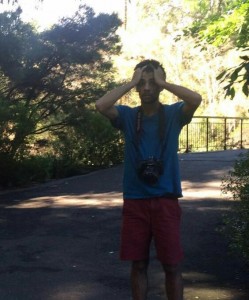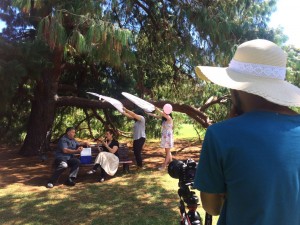https://www.youtube.com/watch?v=SPEIkkP0S4Y&feature=youtu.be
Despite the difficulty John Oliver seems to have believing it in this clip, Jorge Ramos is right: he and his peers – America’s hugely popular slew of comedy newscasters – aren’t just pulling in the ratings: they’re becoming a remarkably influential force in the political sphere. When Time magazine named Oliver in their top 100 most influential list, they cited reasons such as the $25,000 in donations collected by the Society of Women Engineers just days after his piece on Miss America scholarships, and the crashing of the American Federal Communication Commission website when he released his famous segment on net neutrality. (1) These anecdotal cases are supported by the numbers: in a study of political comedy and satire viewers, researchers Hoffman and Young found that “viewing satire or parody has a positive and significant effect on political participation through the mediator of political efficacy.” (2)
But why are these shows so influential, and why now particularly? Parody of current events and news is not a particularly modern phenomenon, so why are we only now seeing such a huge boom in their popularity and influence? I would argue that these shows are successful now because the post-broadcast era of TV allows them greater reach and accessibility.
Traditional broadcast TV is designed to be watched on a certain day at a certain time. Ellis discusses the importance of scheduling when he writes ” . . . scheduling delivers programs to audiences when they are most likely to want to watch them . . . so a narrative is constructed about the ebbs and flows of audiences for each evening’s viewing.” (3) William further expands on this idea when he discusses the importance not just of the way individual programs are scheduled but the way they are scheduled in consideration of each other: “This phenomenon, of planned flow, is then perhaps the defining characteristic of broadcasting, simultaneously as a technology and as a cultural form.” (4)
This idea of flow and scheduling has always been particularly relevant when considering traditional broadcast news; scheduled at 6.00pm when the adults arrived home from work, your choice of news was considered the key to anchoring you to that station for the rest of the evening. But of course, the ‘technology’ that William references is changing, and many argue we live in a post-broadcast world. With the rise of web TV there is a push back against rigid scheduling and a preference for control of when and where you can watch TV. I would argue that it’s this environment that fosters the success of parody news.
Because these shows are mostly popular among young people, (5) and as such embrace the technology that the web has to offer. They are famous – Last Week Tonight in particular – for the way in which individual segments go viral, and the programs seem to almost be built for this web shareability more than the initial TV broadcast. When writing about the segmentation of broadcast TV, Ellis says that “the basic organisation of material is that of the segment, a coherent group of sounds and images, of relatively short duration that needs to be accompanied by other similar such segments.” (6) But Last Week Tonight and similar programs don’t rely on this sequence, instead contextualising individual segments with cultural touchstones and references (7) so that they can be watched on the web outside of the whole program. By not relying so heavily on scheduling and flow, Last Week Tonight and other satirical news programs are able to embrace new technology and give themselves greater access to (and greater influence over) modern audiences.

John Oliver was named as one of TIME Magazine’s 100 most influential people in 2015
(1) Luckerson, Victor. “How The ‘John Oliver Effect’ Is Having A Real-Life Impact”. TIME 2015. Web. 14 Aug. 2016.
(2) Hoffman, Lindsay H. and Dannagal G. Young. “Satire, Punch Lines, And The Nightly News: Untangling Media Effects On Political Participation”. Communication Research Reports 28.2 (2011): 159-168. Web.
(3) Ellis, J. “Scheduling: The Last Creative Act In Television?”. Media, Culture & Society 22.1 (2000): 25-38. P29
(4) Williams, Raymond. Television: Technology And Cultural Form. 2nd ed. New York: Schocken Books, 2003. P86
(5) Hoffman, Lindsay H. and Dannagal G. Young. “Satire, Punch Lines, And The Nightly News: Untangling Media Effects On Political Participation”. Communication Research Reports 28.2 (2011): 159-168. Web.
(6) Ellis, John. Visible Fictions. London: Routledge, 1992. P116
(7) Yahr, Emily. “Why Amy Schumer Is Taking Over The Internet”. The Washington Post 2015. Web. 14 Aug. 2016.




